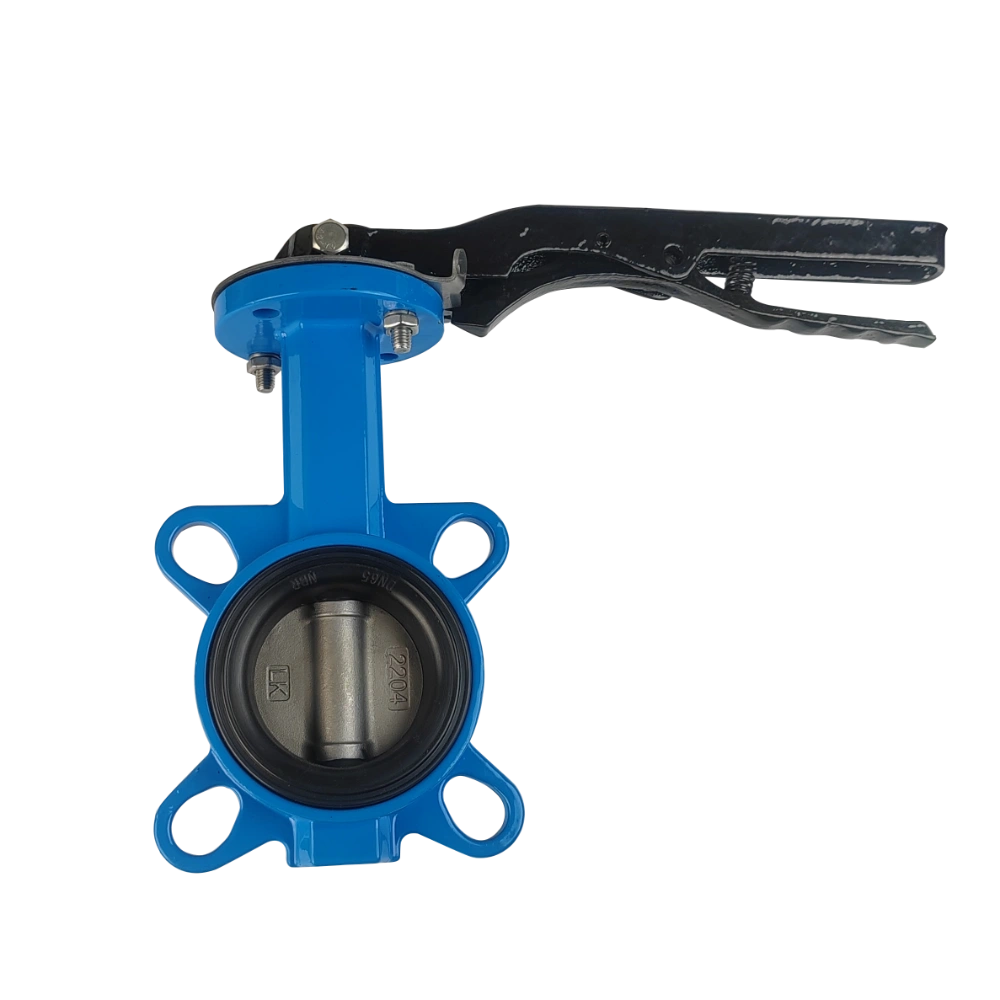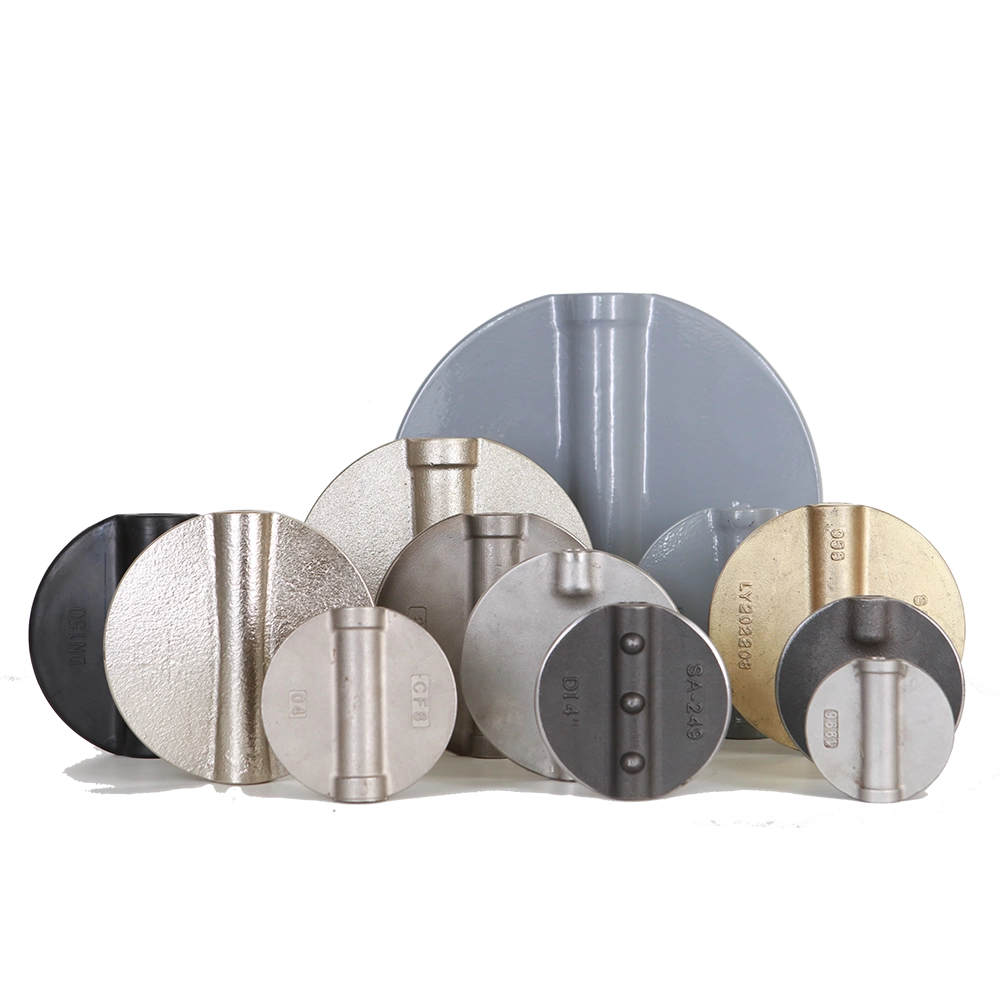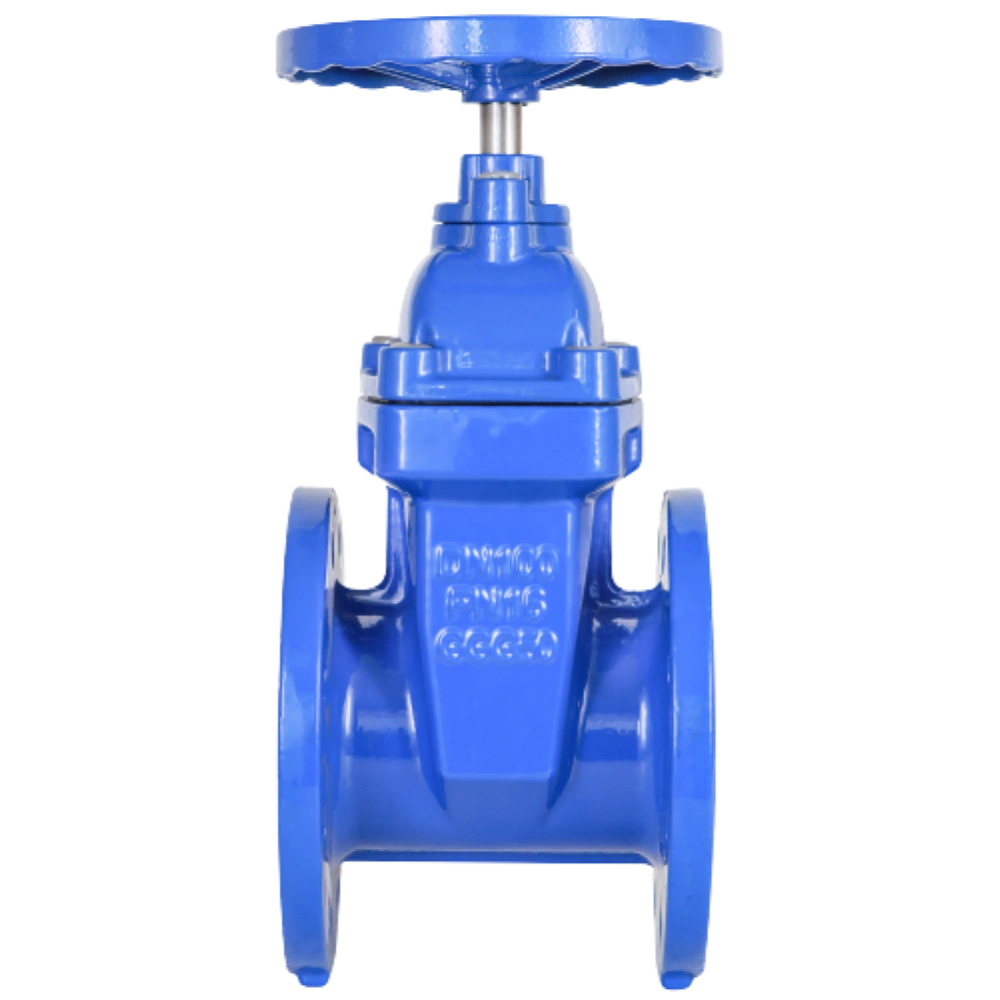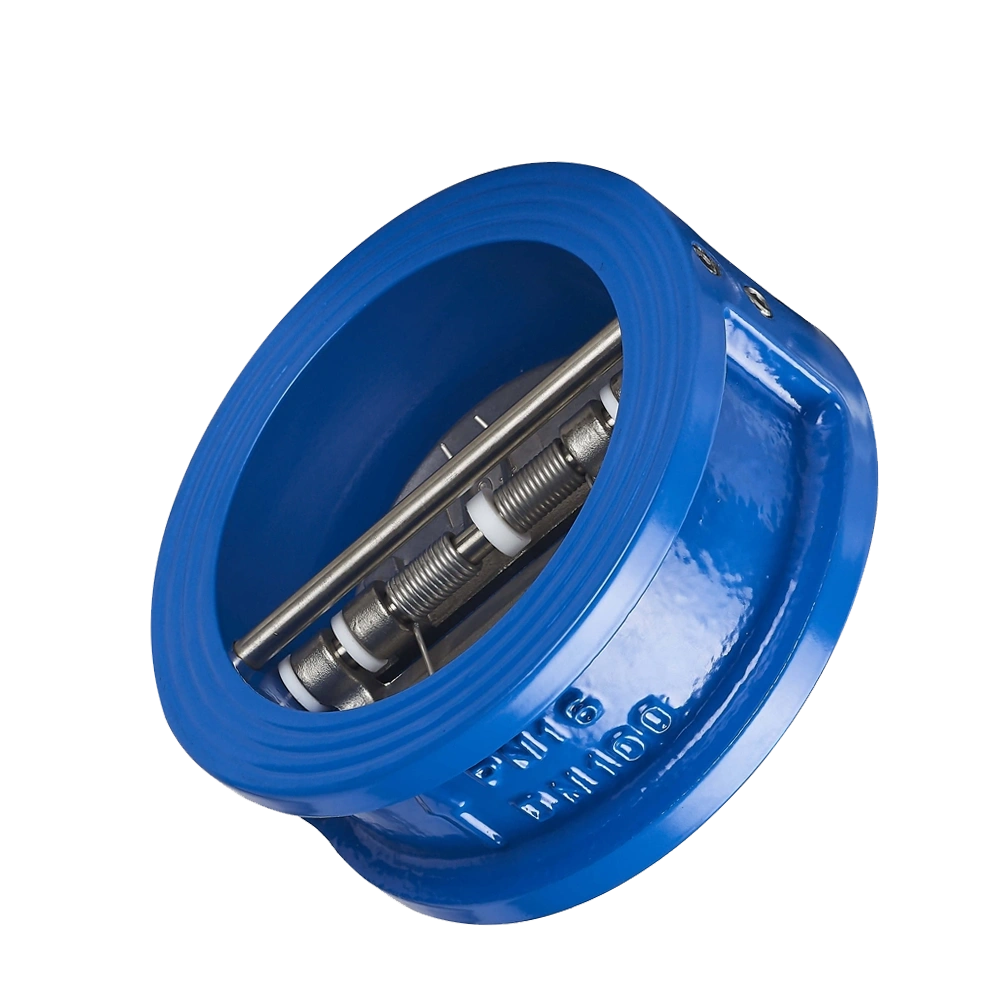Butterfly valves play a vital role in controlling the flow of various liquids and gases. Among the different types of butterfly valves, lug butterfly valves and wafer butterfly valves are two widely used options. Both valves have unique features and are suitable for specific applications. In this article, we will explore the commonalities and differences between lug butterfly valves and wafer butterfly valves. Hope it can will help you to make an informed decision when choosing a valve that suits your needs.
1. Commonalities of lug BFV and wafer BFV.
1.1 Working Principle.
Both wafer butterfly valves and lug butterfly valves control the flow of the medium by rotating the valve plate. The rotation angle of the valve plate can only be between 0 and 90 degrees, that is, the valve is fully open at 90 degrees and fully closed at 0 degrees.
1.2 Same FTF
Wafer butterfly valves and lug butterfly valves are thin designs, occupy less space, and are suitable for installation in pipeline systems with limited space.
1.3 Standardized design:
Both comply with international industrial standards, are easy to connect with standard flanges, and can be easily replaced in existing systems.
| ITEM | Standard |
| Design | EN593 | API609 |
| Face to Face | EN558 | ISO5752 | API608 | BS5155-4 |
| Top Flange | ISO5211 |
| Flange Drilling | PN6 | PN10 | PN16 | ASME B16.5 CL150 | JIS 10K |
| Pressure Rating | PN6 | PN10 | PN16 | PN25 | CL150 | JIS 10K |
| Tightness Test | ISO5208 | API598 | EN12266-1 |
2. Difference: Lug VS. Wafer Butterfly Valve
Both wafer butterfly valves and lug butterfly valves refer to the connection types of butterfly valves. They have the same structural length and similar uses, but they are very different in design, installation, application, and cost.
2.1 Design Difference
- Lug butterfly valves are designed with threaded lugs at both ends of the valve body. These lugs are more conducive to fixing the valve.
- wafer butterfly valve, in contrast, it does not have any threaded inserts and is clamped between two flanges. Bolts pass through the pipe flange and the valve body to fix it, that is, it is designed to rely on the pressure of the flange of the pipe being squeezed by the bolts.
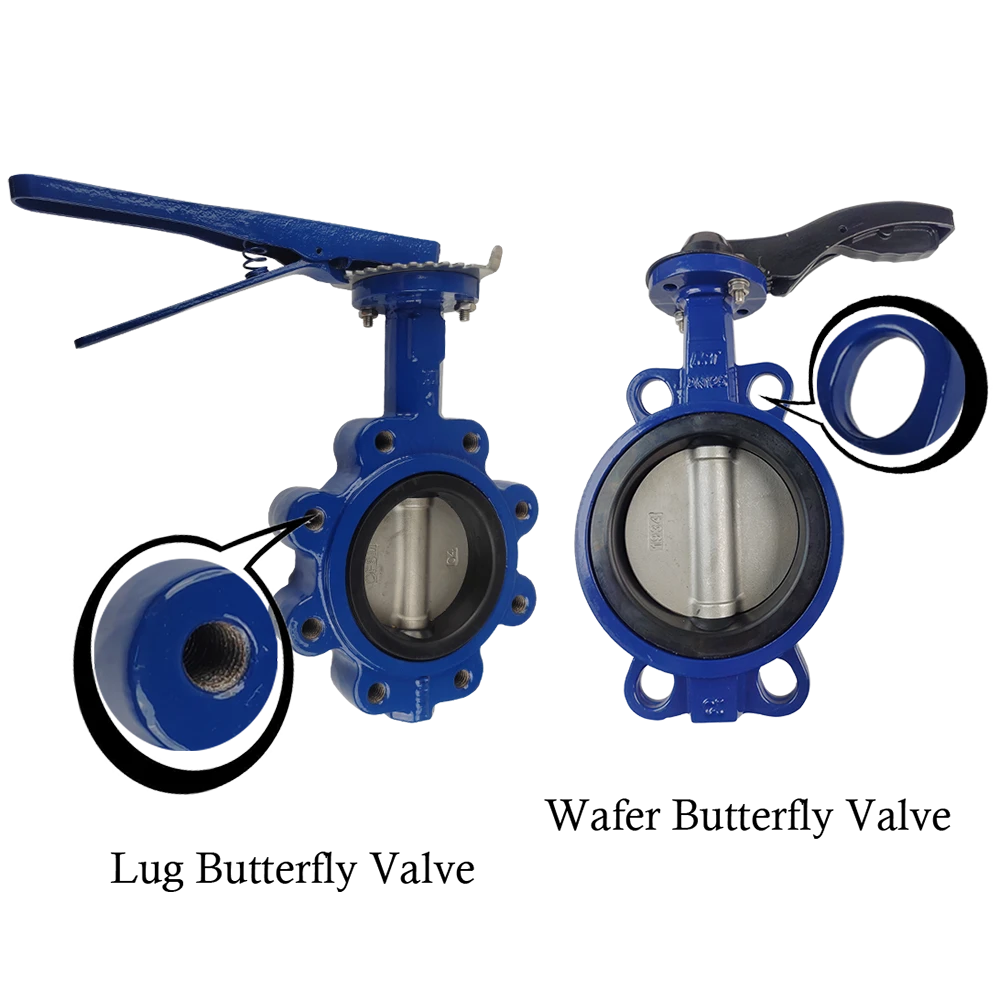
2.2 Installation process.
2.2.1 Lugged Butterfly Valves:
Lug butterfly valves are suitable for situations where pipelines need regular maintenance or need to be frequently disassembled. Threaded inserts can be easily installed and removed without destroying the entire pipeline system. And the lug butterfly valve can be installed at the end of the pipe as a terminal valve.
-Ensure that the lugs are properly aligned with the flange bolts to avoid stress on the valve body.
-Use appropriate gasket material when necessary to prevent leaks, especially in medium-pressure systems.
-Tighten bolts evenly to maintain uniform pressure in the valve.
2.2.2 Wafer Butterfly Valves:
Wafer butterfly valve is more suitable for applications where space is limited to connect the two ends of the pipe, but it cannot be used as a terminal valve, otherwise, it will fall off.
-Verify flange compatibility (e.g., ANSI, DIN) to ensure a tight seal.
-Avoid over-tightening flange bolts to prevent body distortion.
-Install in systems with minimal piping vibration to prevent loosening.
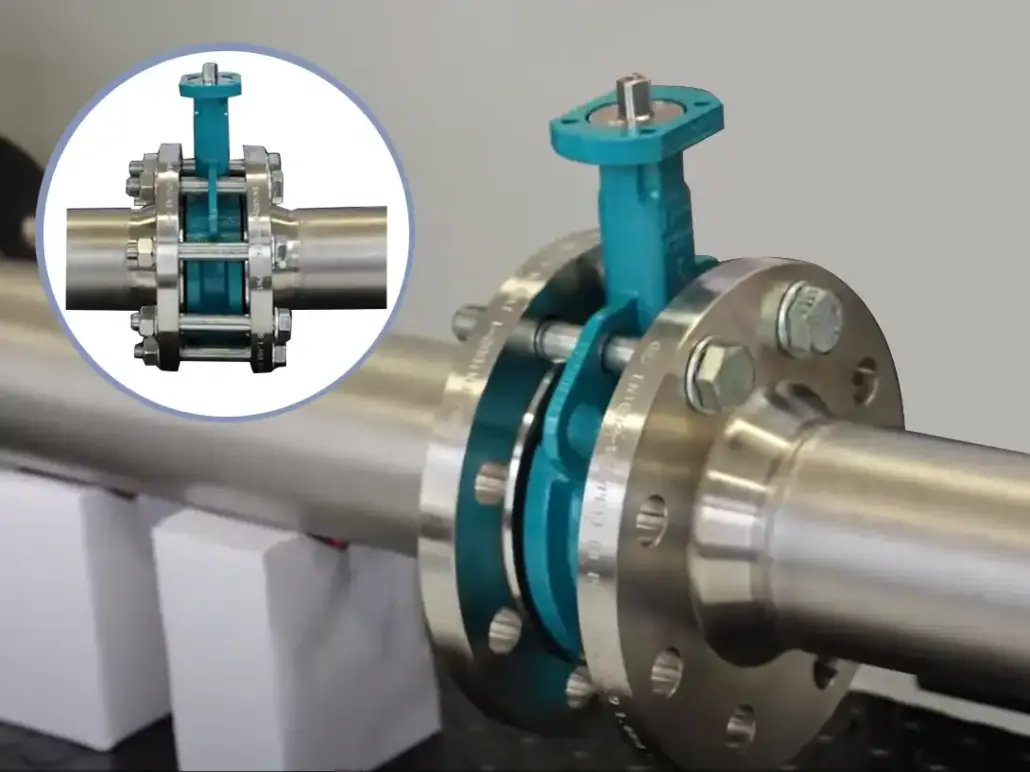
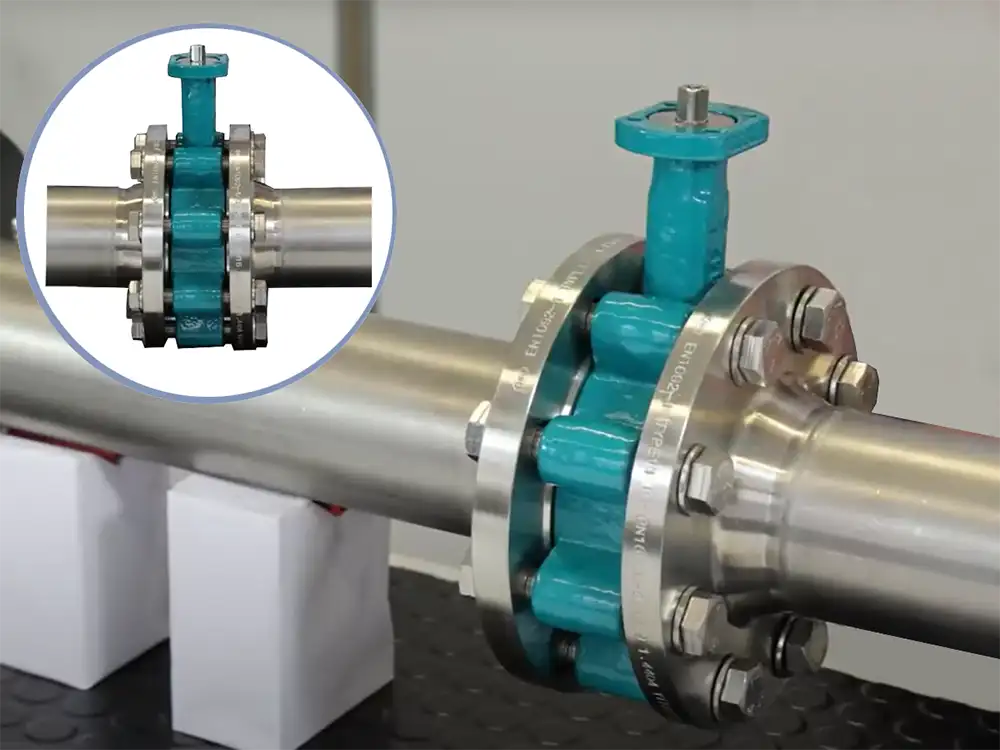
2.3 Sealing mechanism.
The lug butterfly valve provides a tighter seal due to the threaded connection and safety bolts, ensuring leak-free operation and preventing fluid backflow.
In contrast, the wafer butterfly valve relies on the valve compression between the two flanges to achieve reliable sealing, so it needs to be installed completely aligned with the pipe to avoid misalignment and leakage.
2.4 DN and PN
The wafer butterfly valve is usually small than DN600, and a single flange butterfly valve can be used for larger diameters. It is generally suitable for applications with pressure ≤PN16.
The lug butterfly valve has a larger diameter and can handle higher pressure levels, up to PN25, because the lug butterfly valve is more securely installed.
2.5 Cost
Lug butterfly valves and wafer butterfly valves differ in cost-effectiveness. Wafer butterfly valves are generally more economical because they have a simpler design, simpler processing, and require less material. The lug ears of lug butterfly valves need to be threaded, so the processing process is more complicated.
3. Conclusion: Lug VS. Wafer Butterfly Valve
Head-to-Head Comparison
| Feature | Lug Butterfly Valve | Wafer Butterfly Valve |
| Connection Type | Threaded lugs for bolting | Compressed between flanges |
| Weight | Heavier | Lighter |
| Cost | Higher | Lower |
| Dead-End Service | Yes | Limited |
| Pressure Rating | Low to medium | Low |
| Installation | More complex, secure | Quick, flange-dependent |
| Maintenance | Easier, pipeline remains intact | Requires pipeline disassembly |
| Applications | High-vibration, corrosive, high-pressure systems | General-purpose, space-constrained systems |
although the purpose of lug butterfly valves and wafer butterfly valves is the same, both are to control fluid flow, they have significant differences in design, installation, sealing mechanism, DN, pressure rating and cost-effectiveness. The choice of Lug VS. Wafer Butterfly Valve depends on the specific requirements of the application. If regular maintenance or disassembly is required, the lug butterfly valve is the right choice. On the other hand, if space is limited and cost-effectiveness is critical, the wafer butterfly valve is a suitable choice. Understanding these differences will enable you to select the right butterfly valve for your needs and ensure efficient and reliable flow control.

